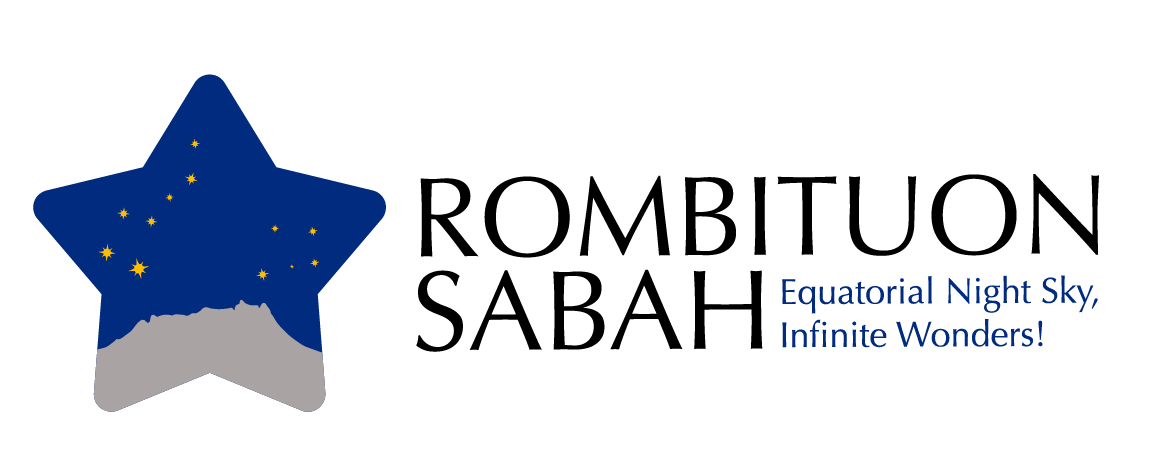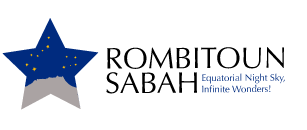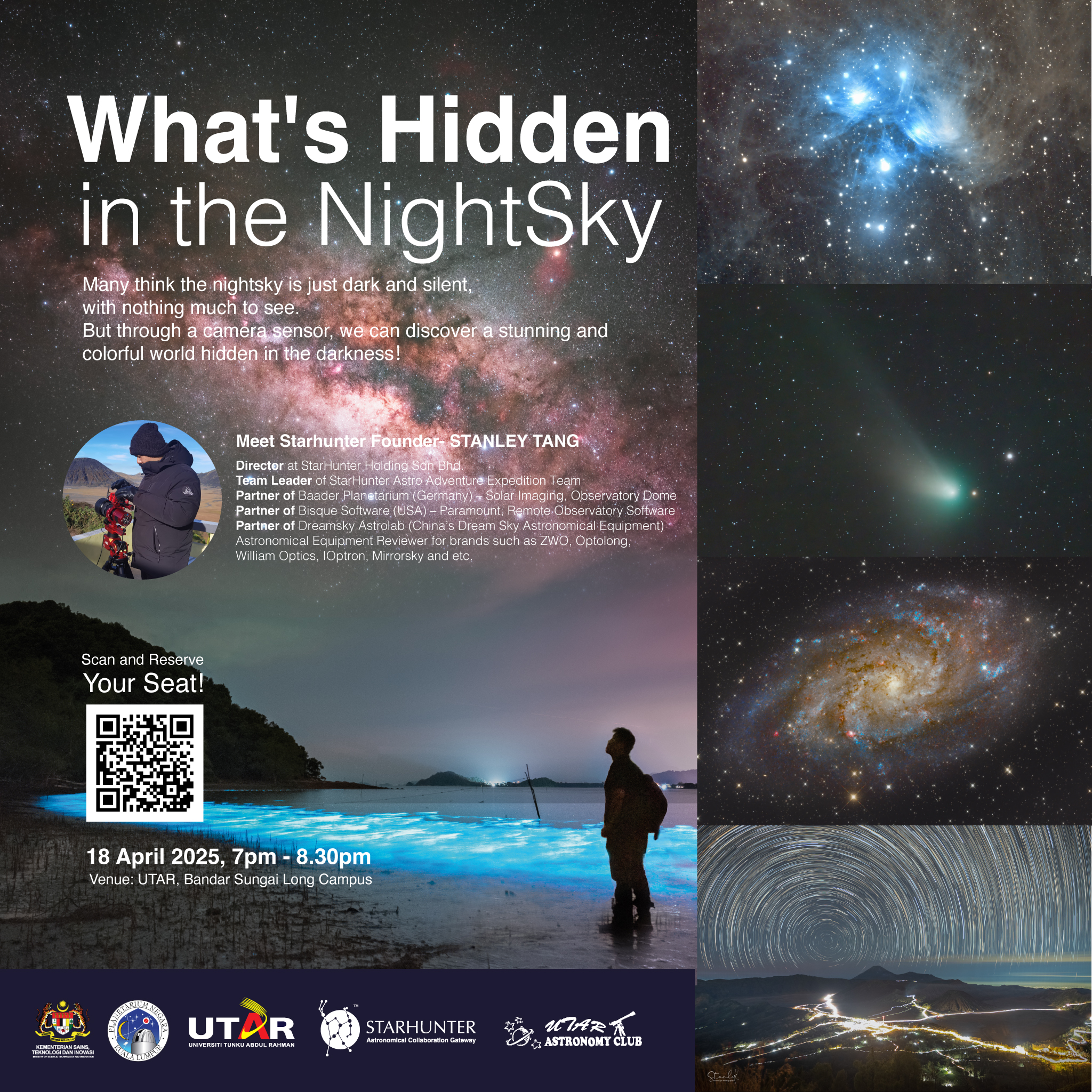International Dark Sky Week –
Celebrate International Dark Sky Week with us—a global movement dedicated to highlighting the impact of light pollution and the need to protect our natural night skies. It’s a meaningful time to reconnect with the wonder of the cosmos and recognize our shared responsibility to preserve its beauty for future generations.
To support this special occasion, Starhunter Alliance is collaborating with the UTAR Bandar Sungai Long Astronomy Club and inviting Planetarium Negara to host a two-part astronomy workshop series—free and open to the public. These engaging sessions aim to ignite curiosity, promote astronomy education, and emphasize the importance of preserving our dark sky.
Workshop 1:
What’s Hidden in the Night Sky

Many think the nightsky is just dark and silent, with nothing much to see. But through a camera sensor, we can discover a stunning and colorful world hidden in the darkness!
A 60-second exposure of the night sky captures light that began its journey 100,000—or even billions—of years ago. The photons we record may have left their stars when dinosaurs still walked the Earth. After an unimaginably long voyage through space and time, they finally reach our camera sensor.
Date: 18 April 2025
Time: 7:00 PM – 8:45 PM
Venue: UTAR, Bandar Sungai Long Campus
Module 1
Why the Universe Unseen?
- Eyes Have Limits – We can only detect a small part of the light spectrum , and we’re not sensitive enough to see extremely faint or distant objects without instrument help.
- Invisible Wavelengths – The universe emits light in forms we can’t see—like infrared, ultraviolet, X-rays, and radio waves.
- Light Pollution – Artificial lighting from cities and drowns out the subtle glow of stars and galaxies, making them hard or impossible to see.
Module 2
Understand Our Night Sky
- Constellations – Learn how to identify constellations and use skymaps to navigate the stars.
- The Equatorial Sky – Explore the celestial features visible near Earth’s equator.
- Northern & Southern Hemisphere Skies – Compare how the night sky appears differently in the northern and southern regions.
Module 3
What’s Hidden in the Night Sky?
- Earth and Space – Discover the beautiful harmony between our planet and the universe
- The Solar System – Meet the Sun and its family planets, moons, asteroids, comets, and more.
- Deep Space Objects – Beyond our solar system to explore distant stars, glowing nebulae, and massive galaxies.
Workshop 2:
Unlock the Universe with Your Telescope

Let’s face it—telescopes can be confusing, and we’re here to make it easier for you!
With so many different types and often come with unclear instructions , it’s no wonder they can be hard to figure out. Trying to figure it out on your own can be tough, and finding someone to help isn’t always easy. I get it—I’ve been there too. As a beginner, I struggled to understand and use my first telescope, and I know how frustrating it can be. But don’t worry, we’ve got you covered!
Date: 18 April 2025
Time: 8:45 PM – 10:30 PM
Venue: UTAR, Bandar Sungai Long Campus
Module 1
History of the Telescope
- Early Developments – Travel back to 1608, when Dutch eyeglass maker Hans Lippershey created the first refracting telescope.
- Modern Telescopes – Popular telescope designs, including Achromatic, Apochromatic (APO), Schmidt-Cassegrain (SCT), Ritchey–Chrétien (RC), and Newtonian
- Space Telescopes – the Hubble Space Telescope and James Webb Space Telescope, both revolutionizing our view of deep space.
Module 2
Structures & Optical Design
- Achromatic Refractors (Archo) – Affordable and simple, great for beginners.
- Apochromatic Refractors (APO) – High-precision optics with reduced color distortion for serious observers and astrophotographers.
- Schmidt-Cassegrain (SCT) – Compact, versatile scopes with long focal lengths, ideal for both observation and imaging.
- Ritchey–Chrétien (RC) – Preferred by astrophotographers and researchers for their wide, flat fields and high contrast.
- Newtonian Reflectors (Newt) – Classic, powerful reflectors known for bright images and budget-friendly setups.
Module 3
Telescope Select Guideline
- Beginner – Easy-to-use, portable scopes to spark curiosity and learn the basics.
- Hobbyist – More advanced features and optics for casual astronomy and deeper sky views.
- Amateur Astronomer – Serious tools for deep-sky imaging, tracking, and high magnification.
- Researcher – Professional-grade setups with precision optics, data recording, and remote control capabilities.









